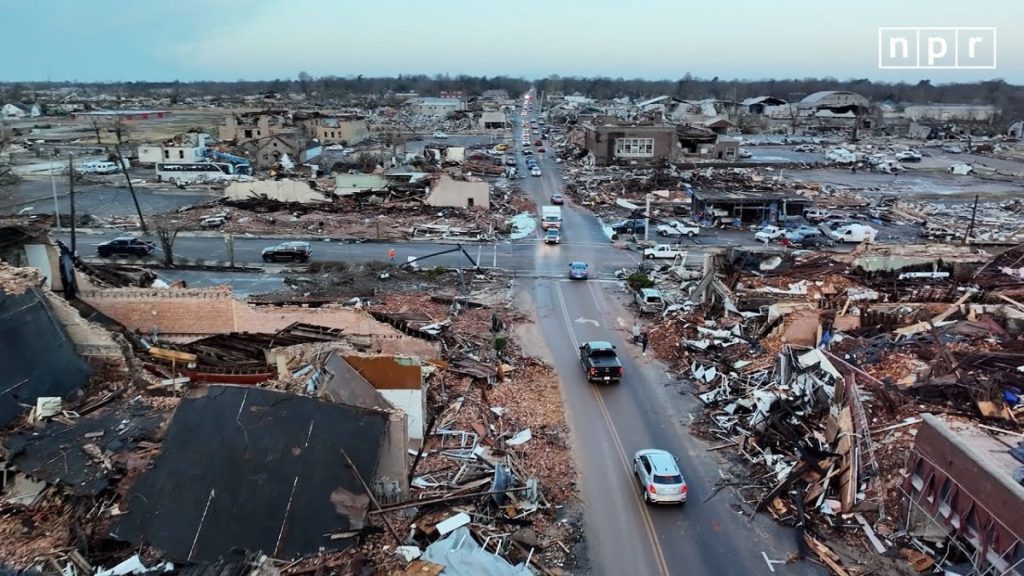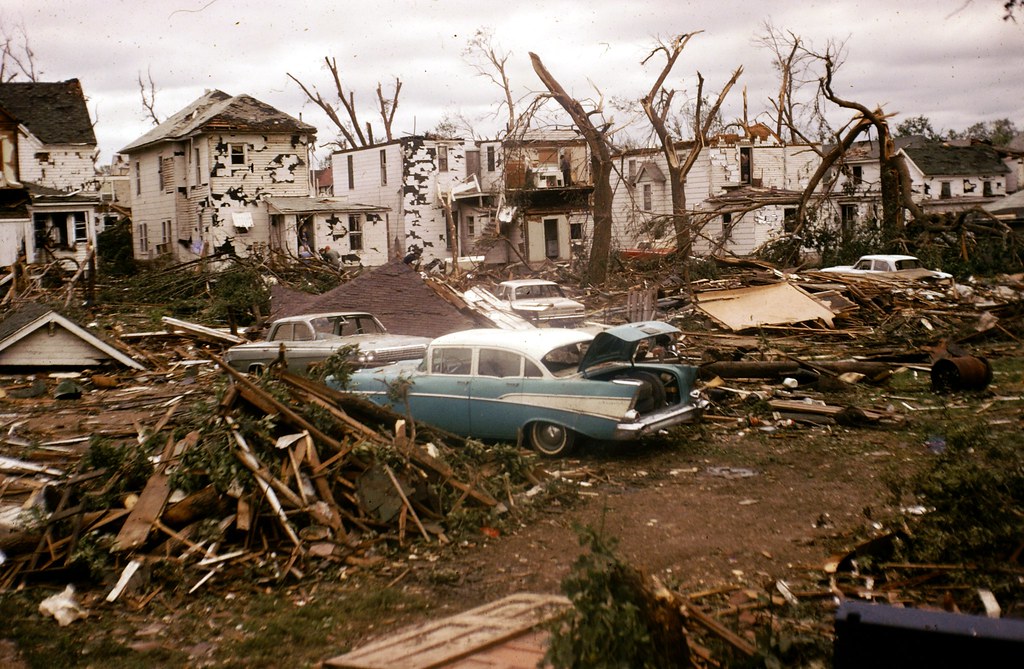
Tornados. My heart is aching for the victims of the recent tornadoes. If you have never directly observed the destruction of a Fujita 5 tornado, you would have a hard time imagining the destruction.
The summer of 1966 we had first-hand experience with that level of a storm. Over 50 years later, the images and memories remain intense in my mind.
Jeny had graduated and taught for two years. I worked at the Menninger clinic in Topeka Kansas. We saved money to buy a trailer house and were preparing to move to Iowa City for graduate school.
We lived in a duplex with a basement. Two students, Rick Graham and Helmar Heckel, lived in the basement. They remain friends to this day.
Tornadoes almost always move from southwest to the northeast. Topeka has a large Indian burial mound on the southwest corner of town. The residents of Topeka believed the mound protected them from tornadoes. They believed any tornado would hit the mound and then rise up and miss the town.
The mound was named Burnett’s mound. The site was named after Abram Burnett, a Potawatomi chief. The indigenous people in the area were concerned because the sacred mound had been disturbed twice; first by the construction of a water tower and second by the construction of a highway bypass.
On June 8, 1966, we heard the sirens and a report that a major tornado was on the ground several miles southwest of Topeka. We went to the basement. We had good warning but nothing like the systems we have today. In my research on the storm, I found a fascinating look at the differences between warning systems then and now. It also has some pictures of the devastation.
After I got the family in the basement, I went upstairs and peeked. I was ready to race back downstairs if I saw anything headed our way. I never saw a classic spinning twister. As it happened, the tornado was so close to the ground it did not have a classic look.
The tornado reached Burnett’s mound and proceeded to go right up over it and down through town. It cut a swath through Topeka from the southwest corner to the northeast.
When the all-clear was sounded, we got in the car and went to see what happened. Less than a half mile away, we turned a corner, and I was shocked to see nothing where trees and buildings had been. The devastation was staggering. On the edges, trees and houses were damaged, but in the middle, everything was leveled — flat — gone.
Our Alma Mater, Washburn University, suffered major damage. Seventeen people died. The damage was the most expensive tornado recovery ever — up to that point in time.

Poetry. I recently had a poem published which described my experience.
The Magnificence of Nothingness
(Topeka, Kansas, June 8, 1966)
Eerie silence in green heavens
bodes evil spinning billows.
Sirens signal what Kansans already know — hide below.
Devastation forms on the distant prairie.
No hopping, skipping, jumping tail;
pillar of thick and wide, lowers and levels
then howls and devours a long swath
from field to town and beyond.
Within the disturbed sacred burial site
one hears the cry, “no protection here”
as destruction roars up over Burnett’s mound
and rumbles down through town.
Miles and minutes pass in fury
until curious calm returns to splinters of oblivion
and air replaces matter.
Perished images mock unbelief,
silence pays homage to frightening power.
In quiet awe and dread-filled discomfort,
the magnificence of nothingness is seen.

How to help. One of the important lessons I learned from my experience was the commitment of the Mennonite Church to helping in disaster relief. People came from far and near to help. They were organized and a very good witness.
I saw the same love a few years later. When Katrina hit, Mennonite Disaster Relief was a big help for many people along the Gulf Coast.
I am sure they are on the ground helping the many victims of the recent disaster. They are just one of many ways to help, but if you are looking for a way to support the recovery, the charity is one I support and recommend.

Central factor in the development of America. In my last blog I said I was not sure what was the central factor in American history. One person thoughtfully suggested the Constitution. I would be interested in hearing what more of you think.

Good News. Another week for good news.
Good News
- One of many stories in Kentucky
2. A great idea that is spreading.
3. A truly touching story.
Customer Surprises Homeless Dunkin’ Employee With A Furnished Home (sunnyskyz.com)
There are many more articles about helping tornado victims and charity at Christmas time. We do have goodness, as well as evil, in our world.
Peace
Jerry
0 Comments